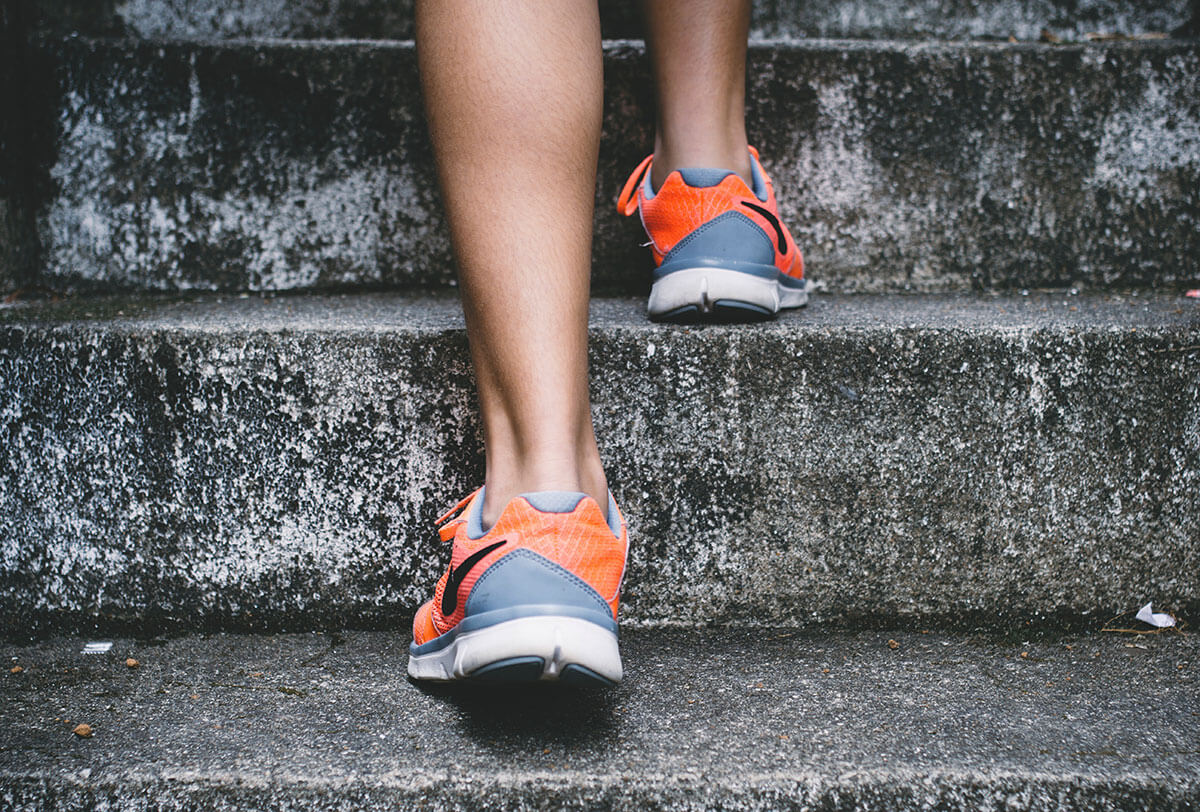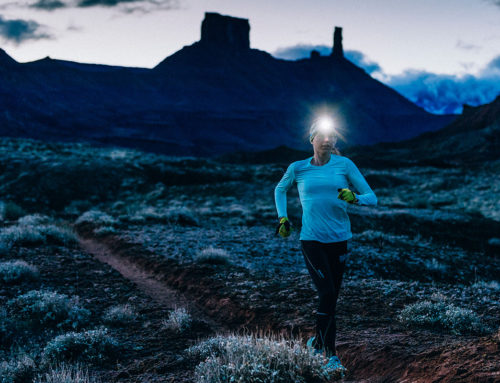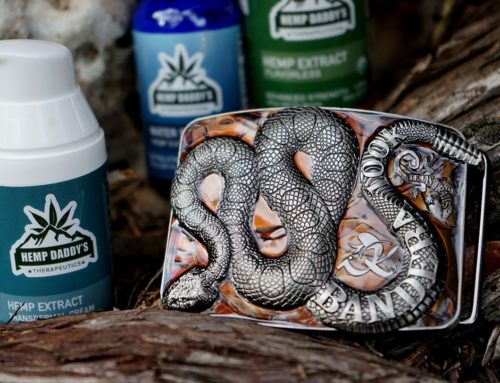I started Hemp Daddy’s partly because of how CBD has helped with my Achilles tendonitis. As I write this, it’s an injury I have struggled with for four years.
I had seen little progress with recovery prior to starting to use CBD, but it wasn’t CBD alone that helped me. A disciplined stretching and exercise routine has been provided me with enormous benefits.
In the past year I would venture to say that I’ve seen 75% recovery from this nagging injury. I’m no longer stiff in the mornings, or after long runs.
Achilles tendonitis causes
Before we can start doing exercises to help heal our achilles tendonitis, we need to understand the cause. Achilles tendonitis usually results from microtears that occur in the tendon during strenuous, high impact exercise, such as running.
Usually it’s brought on by overuse. Examples include: adding mileage into your weekly workout too fast, intense workouts, such as speed and hills.
I personally first started experiencing issues after ramping up mileage for a 100k race. It was the most intense I have ever trained. I also notice my tendonitis flares up during speed workouts or taking on a hill workout too hard.
That being said, it’s important to realize what workouts make your injury worse, and either avoid them, or back off in intensity. Taking the active recovery approach along with the following exercises can help you get back to normal faster.
Best Achilles tendonitis exercises
Having dealt with this for years now, I have found a small hand full of stretches that make the biggest difference (at least they did for me). Practice these achilles tendonitis exercises, and you are sure to see progress.
Calf stretch
- Lean forward with your hands against a wall.
- Have one foot on the ground, with the leg straight, and one foot in front of it, with the knee bent.
- Push your hips toward the wall and hold for 30 seconds.
- Relax and repeat 3 times for each foot.
- There are several other calf stretches you can do, I often do this as well as the Yoga pose Downward Facing Dog.
Bilateral heel drop & raises
- Stand with the front half of your foot on a stair or step, with your other foot fully on the step
- Slowly lower your injured heel as far as far as you can and then slowly raise your feet up so you feel the stretch in your calf (now, if your injury is bad you will want to avoid the raise until you make some progress, focus on the drop if you are severely injured)
- Repeat for two minutes on each foot
Band Stretches
- Taking an exercise band, wrap the band around your toes and grasp the end of the band with your opposite hand
- With tension on the band, point your foot down and out, and hold briefly before bringing the foot back up
- Repeat this exercise for two minutes
These exercises also help strengthen, so make sure you perform them on both feet. There are many other exercises you can do to help strengthen the Achilles tendon, but these are the ones I found to be the most helpful.
Hamstring Stretches
Tight hamstrings can also be linked to Achilles tendonitis as well as issues such as plantar fasciitis, and even knee problems. There are some great stretches for tight hamstrings, as well as lots of educational information at 5ASide.com
You might even have tight hamstrings and not even know it.
You can easily tell if your hamstrings are right by laying down flat on your back, raise one leg up and place your foot flat on the floor. Your knee is now up and at a 45 degree angle. Now, with your other leg raise it up, keep it straight. If you can’t raise your leg to an 80-90 degree angle, you have tight hamstrings.
Aside from stretching, one thing that can help with tight hamstrings is to spend less time sitting, and more time on your feet. I stand up desk is a great way to spend less time sitting.
Foam Rolling
- Roll out your calfs, thighs, hamstrings, and quads
- Spend at least 30 seconds on each area
- Spend extra time rolling on any areas that are extra stiff
Other things you should consider
If your issue has been ongoing, you might need to consider a few unconventional things to help speed recovery.
- Footwear: This is maybe the number one thing you should look at to help with recover. Zero drop shoes are very popular, but can actually make Achilles tendonitis worse because of the strain it puts on the muscle. Shoes that have some drop to them decrease the stress on the tendon. I was a big-time supporter of the minimalist running movement, but moving away from zero drop shoes made quite a bit of difference.
- Strengthening Exercises: Don’t just focus on the Achilles tendon. If you developed Achilles tendonitis it was likely because of an underlying issue, such as weak core, calfs, or hip flexors. Adding in core focused workouts, such as Camp Gladiator could make a big impact on recovery. Just be careful to not overdo it, sometimes these workouts can put a lot of emphasis on intensity.
- Stretch Daily: or as much as you can. I started seeing the most progress in my recovery once I started stretching on a near daily basis. This also included strengthening exercises as well, that focused on my core and hip flexors. Stretch before and after workouts too. When I was younger I rejected the idea that stretching was necessary. Perhaps if I hadn’t I wouldn’t have been chronically injured for so long.
- Active Recovery: If your injury is acute, definitely take time off of running to recover from the injury, but if it’s chronic, you might consider active recovery. If you are a runner, this is likely the approach that interests you the most. Keep up a regular running schedule, but back way off of intensity. Keep hill and speed workouts to a minimum as well. The famous Dr. Phil Maffetone recommends subtracting five beats per minute from your maximum aerobic heart rate zone for training runs (when injured). In other words: keep your workouts slow and easy.
- Deep Tissue Massage: I’ve seen a lot of benefit from professional deep tissue massages, as well as massages I do on my own. Any time I apply CBD cream to my injured areas I spend a few minutes really working it in, which helps with the absorption of CBD as well as increasing blood flow to help heal the injury.
Don’t overdo it
I’m not a medical doctor or physical therapist, so take my advice with a grain of salt. These are just the things that have benefited me the most in my recovery. Remember to take it easy, and don’t push through pain. I’ve seen medical professionals several times to determine I don’t need surgery, so please be sure you do that before proceeding with any form self treatment.
Finally, as I mentioned at the start of the article, I really believe CBD has helped me to see progress with my recovery. It’s anti-inflammatory properties help with the healing process, and also just help cut down on the every day pain associated with the injury.
For chronic injuries like this, I recommend both our transdermal cream and tincture oils, but if you can only afford one treatment, go with the tincture oil.
Sources: Medical News Today

Water Soluble CBD – Full Spectrum
Great for mixing into your favorite beverage, such as coffee, smoothies, and water. With high bio-availability our fast acting water soluble CBD will be boosting your mood and cutting down on discomfort in no time. Get the relief you have been looking for, even when other CBD products haven’t worked.














